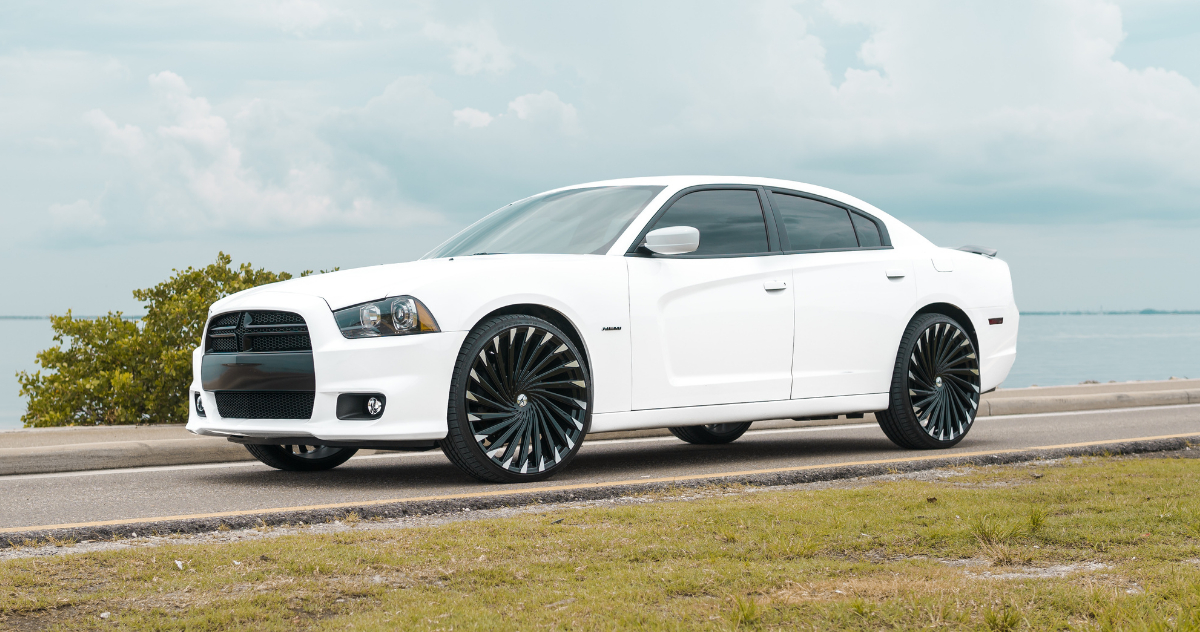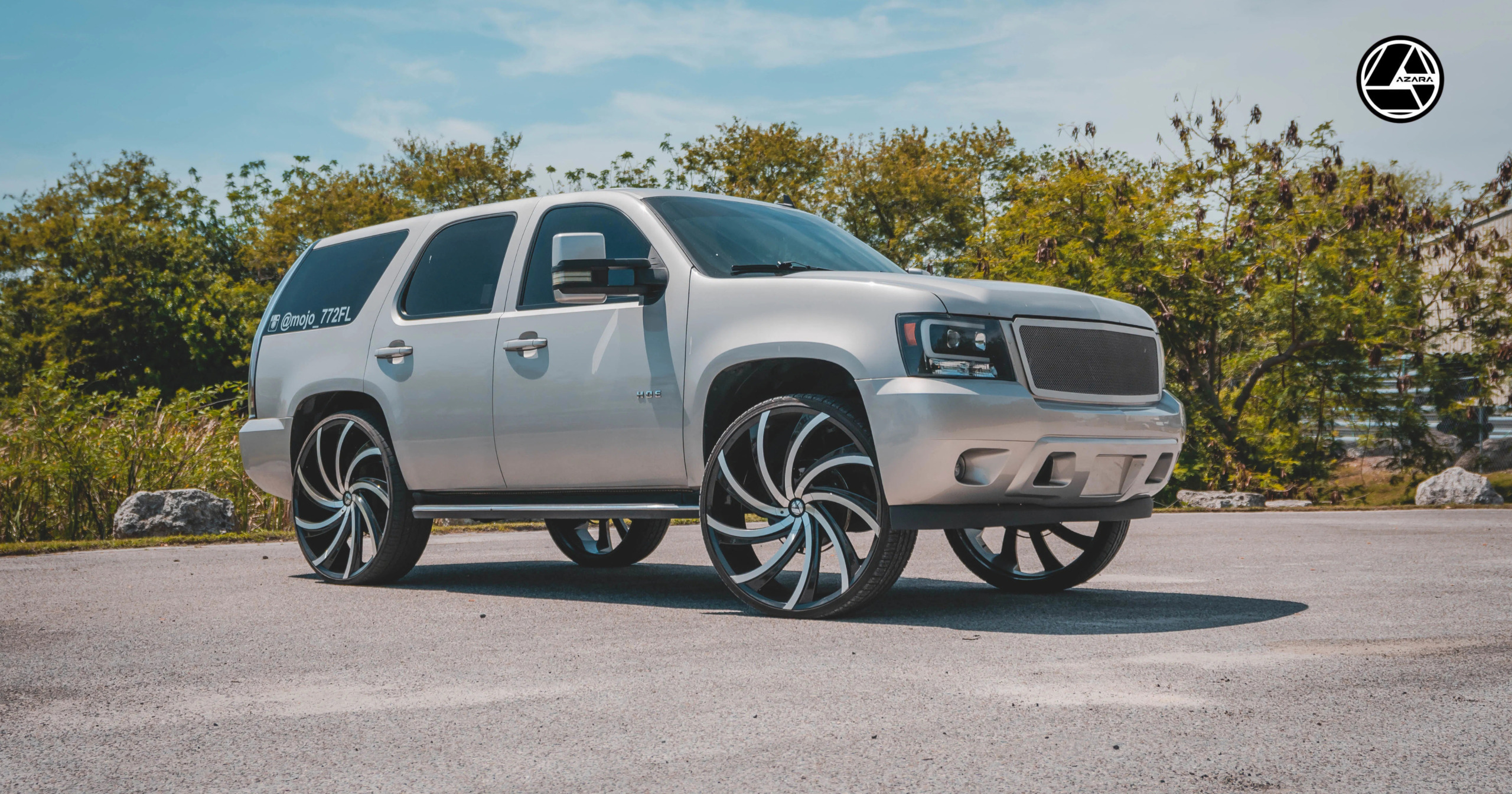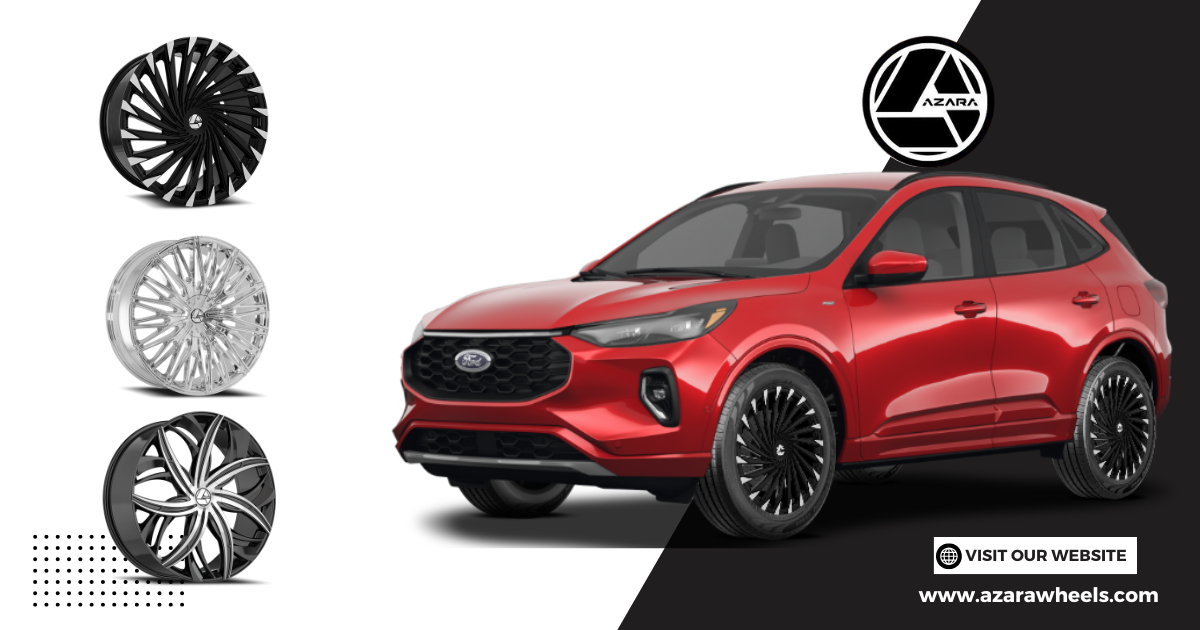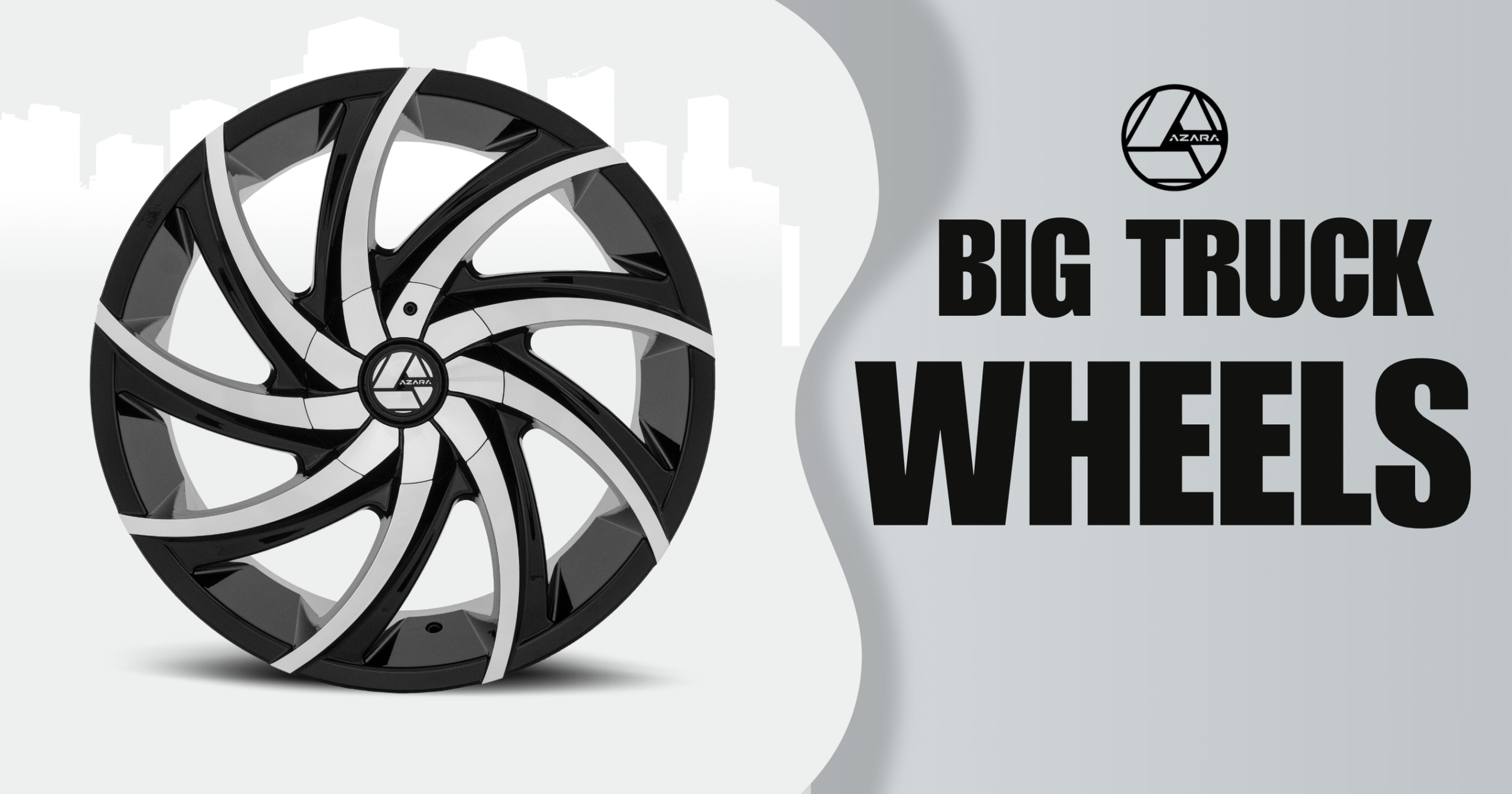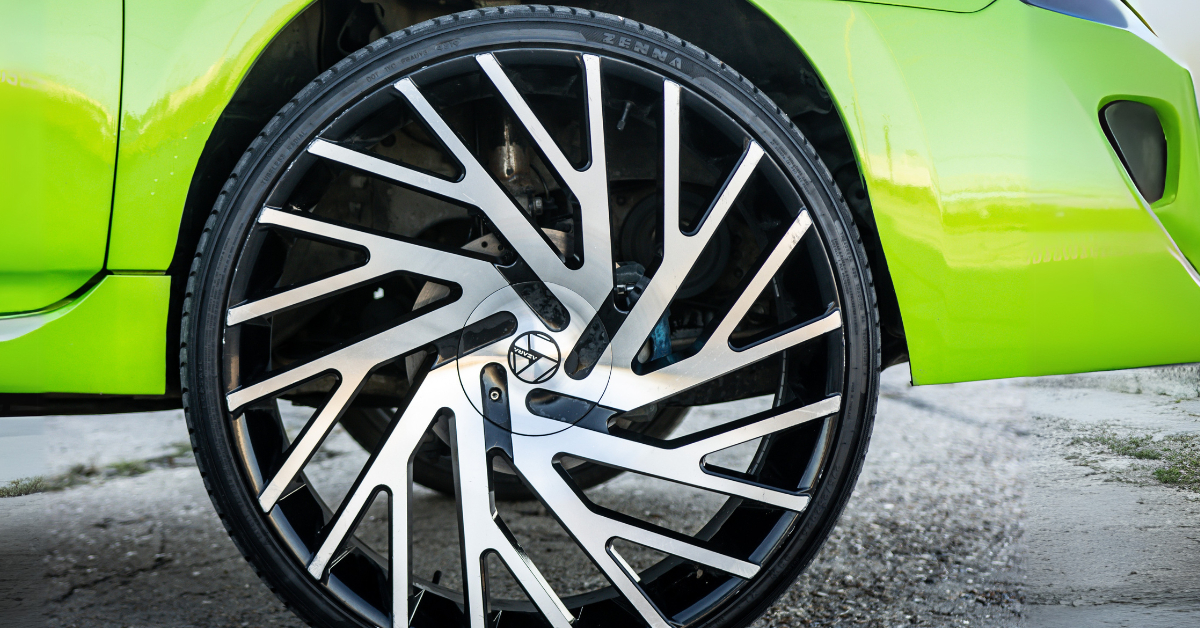Blog
How Do I Measure Wheel Offset? Learn in 5 Easy Steps!
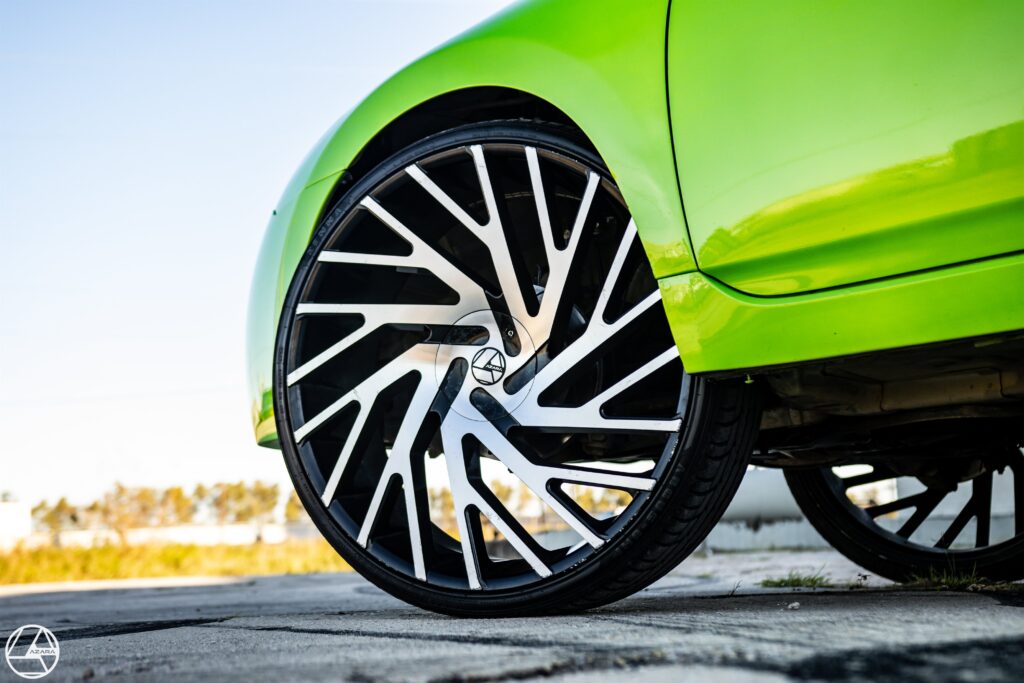
Remove the wheel, measure backspace and wheel width and do a little math using this formula: Offset = Backspacing – (Wheel Width ÷ 2). Measuring wheel offset is important for your wheels to fit perfectly without affecting the car’s handling. Wheel offset is the distance between the wheel’s mounting surface and its centerline. It determines whether the wheels will sit further in, flush, or stick out.
A correct offset ensures a smooth ride, prevents tire wear, and improves vehicle stability. If your offset is wrong, you might experience rubbing against suspension or fenders, poor alignment, or even handling issues. Getting the right measurement is key to a comfortable ride and correct wheel fitment.
At Azara Wheels, we design wheels with precision, performance, and style in mind. No matter your car type, we ensure a perfect offset fitment for a smooth, balanced ride. Keep reading to learn how to measure offset the right way!
What Is Wheel Offset
Wheel offset is how far your wheels sit in or out in relation to your car’s fenders and suspension. It’s measured from the mounting surface to the centerline of the wheel and affects how your car handles, steers, and looks. If the offset is too high, your wheels sit too far in, too low, and they stick out too much. Getting it right ensures a smooth ride, no rubbing, and perfect fitment. It’s a small detail that makes a big difference in performance and safety.
Why Measuring Wheel Offset Is Important?
If you’re upgrading your wheels, measuring the offset is a must. It’s not just about making them fit. It affects how your car handles, steers, and how long your tires and suspension last. A wrong offset can cause rubbing, poor stability, and even expensive repairs. It –
Avoid Rubbing and Clearance Problems
A bad offset can make your wheels sit too far in or stick out too much, causing them to rub against the fenders, suspension, or brakes. This not only damages your tires but can also mess up your handling. Measuring the offset properly ensures your wheels sit in the right position, preventing clearance issues and giving your car a clean, well-fitted look.
Better Handling and a Smoother Ride
Your car’s suspension is designed to work with a specific wheel placement. If the offset is wrong, your car won’t handle as it should it might feel unstable or unbalanced, especially at higher speeds or when cornering. The right offset keeps your car’s steering responsive, improves stability, and gives you a much smoother ride.
Prevent Uneven Tire Wear and Expensive Repairs
Offset affects more than just fitment: it also impacts tire wear and suspension stress. If the wheels are positioned incorrectly, certain parts of the tire take more pressure than they should, wearing them out faster. Plus, a wrong offset can put extra strain on your suspension and wheel bearings, leading to costly repairs. Measuring it properly saves you money and keeps everything in good shape.
The Right Offset = A Perfect Fit
Getting the right wheel offset means no rubbing, better handling, and a longer-lasting setup. Whether you want a stock look or an aggressive stance, knowing your offset ensures your wheels fit perfectly without causing issues. Take a few minutes to measure it before swapping your wheels.
How To Categorize Wheel Offset
Let’s talk about the three main types of wheel offset. It all comes down to where your wheel attaches to your car (that’s the mounting surface) compared to the center of the wheel. Here’s how it works:
Positive Offset
This is when the mounting surface is closer to the outside of the wheel, meaning the wheel is pushed inward toward your car. Most everyday cars and SUVs have positive offset wheels because they help with stability and keep your wheels neatly tucked under the fenders. If you look at most factory wheels, they have a positive offset; it just makes for a smoother, safer ride.
Negative Offset
If the mounting surface is closer to the inside of the wheel, it is a negative offset. This makes the wheel stick out more. This gives your car a wider, more aggressive stance. If you’ve ever seen a truck, Jeep, or custom car with wheels that stick out past the fenders, that’s a negative offset in action. It looks bold and rugged, but it can also put more strain on your suspension if not done right.
Zero Offset
Zero offset means the mounting surface sits right in the middle of the wheel. This setup isn’t super common, but some vehicles, especially custom builds, use zero offset to create a perfectly centered look. It’s a balanced option that gives your wheels an even stance without pushing them too far in or out.
Wheel Offset Measuring Tools
To measure wheel offset, you’ll need a few basic tools:
- Straight Edge: A ruler, metal bar, or even a sturdy book.
- Measuring Tape or Caliper: For precise measurements.
- Flat Surface: Like a garage floor or workbench.
- Marker or Chalk: To mark the centerline.
DIY Tools:
You can do it easily just grab some:
- Yardstick or level as a straight edge.
- String and ruler can work for backspacing in a pinch.
Step-by-step Guide to Measuring
Alright, let’s get into it! Measuring wheel offset might sound like rocket science, but trust me, it’s not. Just follow these simple steps –
Step 1: Remove the Wheel
First things first, you gotta get that wheel off your car. Grab your jack, lift it up, and take the wheel off. Lay it flat on the ground with the mounting side facing up. (Pro tip: Don’t skip this step unless you’re a magician who can measure wheels while they’re still in the car. Spoiler: You’re not.)
Step 2: Measure the Wheel Width
Now, grab your measuring tape and measure the overall width of the wheel. That’s from the outer edge to the inner edge (not including the lips because they’re just for show). Write this number down because you’ll need it later. Oh, and divide it by 2 to find the centerline of the wheel. (Yes, math is involved. Don’t worry, it’s just one division!)
Step 3: Find the Mounting Surface
Okay, now it’s time to bring out the straight edge of your ruler, metal bar, or even that old yardstick you found in the garage. Place it across the back of the wheel so it’s nice and flat. This is your reference point for the next step. (If it’s wobbling, you’re doing it wrong. Stop wobbling!)
Step 4: Measure the Backspacing
Here’s where things get interesting. Measure the distance from the straight edge to the mounting surface (that’s where the wheel bolts to the hub). This is your backspacing. Write this number down, too. Don’t trust your memory unless you’re a human calculator. (Spoiler: You’re probably not.)
Step 5: Calculate the Offset
Take the backspacing measurement and subtract the centerline from it. The number you get is your wheel offset. If it’s positive, your wheels sit further inward. If it’s negative, they stick out more. If it’s zero, your mounting surface is perfectly centered with the wheel.
For example, if your wheel width is 10 inches and your backspacing is 6 inches, your offset is +1 inch (or +25.4 mm). (If math makes you sweat, just use an online wheel offset calculator. No shame in that game!)
Wheel Offset Calculation Chart
Here’s a quick reference chart to help you determine your wheel offset based on wheel width and backspacing measurements.
Wheel Width (inches) | Backspacing (inches) | Offset (mm) |
7.0 | 4.0 | -12 |
7.0 | 4.5 | 0 |
7.0 | 5.0 | +12 |
8.0 | 4.0 | -25 |
8.0 | 4.5 | -12 |
8.0 | 5.0 | 0 |
8.0 | 5.5 | +12 |
9.0 | 4.5 | -25 |
9.0 | 5.0 | -12 |
9.0 | 5.5 | 0 |
9.0 | 6.0 | +12 |
10.0 | 5.0 | -25 |
10.0 | 5.5 | -12 |
10.0 | 6.0 | 0 |
10.0 | 6.5 | +12 |
Tips for Measuring Wheel Offset
Measuring wheel offset is easier than you think. Always measure twice to avoid mistakes trust me, guessing won’t work here. Lay the wheel flat on a level surface to keep things accurate, and don’t forget to mark the centerline so you know where to measure. Take your time. Rushing only leads to errors, and nobody wants wheels that don’t fit. If math isn’t your thing, use an online wheel offset calculator to do the heavy lifting.
Once you’ve got your numbers, test-fit the wheel to make sure there’s enough clearance for the tires and suspension. And hey, if you’re stuck, don’t be afraid to ask for help or double-check your work. Write everything down so you don’t forget, and most importantly, stay calm. You’ve got this! Measuring wheel offset is just a step-by-step process, and before you know it, you’ll be a pro. Now, get those wheels sorted!
End Note
Getting your wheel offset right is the key to a perfect fit, smooth handling, and avoiding costly mistakes. If you get it wrong, you might deal with rubbing, poor stability, or uneven tire wear. But when you measure it properly, you’ll enjoy better performance, a smoother ride, and longer-lasting tires. Taking a few minutes now saves you a lot of trouble later.
At Azara Wheels, we’ve got the perfect wheels for you built for style, performance, and the right fit. Check out our collection today and upgrade your ride with confidence!
Frequently Asked Questions
How to you determine tire offset?
Tire offset is the same as wheel offset. You can determine it by measuring the backspacing (distance from the mounting surface to the wheel’s back edge) and subtracting half of the wheel width. This tells you whether your wheels sit inward, outward, or centered.
How is wheel offset measured?
Wheel offset is measured by finding the backspacing (distance from the mounting surface to the back edge of the wheel) and subtracting half the wheel width. The result tells you whether your wheel has a positive, negative, or zero offset.
What is the rule for wheel offset?
The general rule is that a higher (positive) offset tucks the wheels inward, while a lower (negative) offset pushes them outward. Keeping your offset close to the factory specs helps prevent rubbing, handling issues, and uneven tire wear.
Where can I find the wheel offset?
You can usually find the wheel offset stamped or engraved on the back of the wheel, often marked as “ET” followed by a number (e.g., ET35 means +35mm offset). If not, you can measure it manually using backspacing and wheel width.
